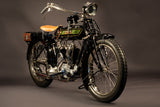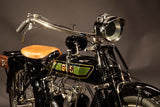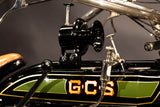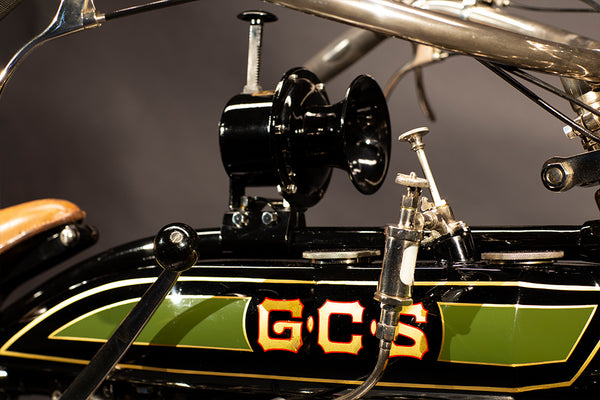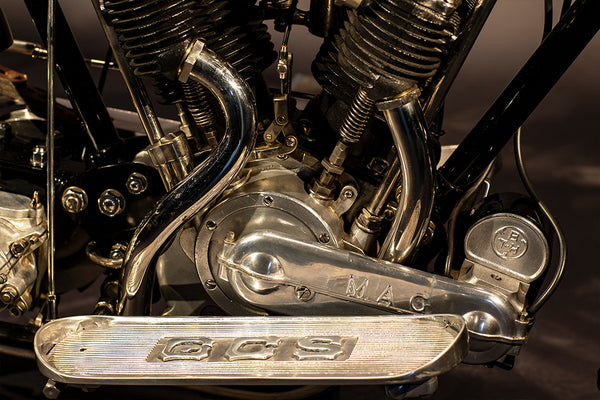1925 GCS Twin
Manufactured in AUSTRALIA.
Engine # 2595
Believed to be the sole surviving example of the model, 1919 CGS 750cc Twin.
1925 GCS 750cc Twin. Australia had always been a haven for motorcycle activity. Riders appreciated a rugged machine that was able to traverse the long distances between populations and they reveled in racing events. For many years, the country was an important market for English manufacturers like the small Velocette company, and for many American companies like Indian, Reading Standard and Harley-Davidson. However Australia was not without their own manufacturers.
GCS was one of those home grown motorcycle manufacturers in the land down under. They were strongly influenced by their cultural ties to England and the motorcycles would not have looked out of place whether they were ridden in Cambridgeshire or around their home of Melbourne, Australia. George Cyril Stillwell, from which the initials GCS originated, built motorcycles from 1913 through 1926. As with many English manufacturers, they made full advantage of the many proprietary components such as engines, transmissions and forks. Early GCS machines used J.A.P. side valve engines, the same as used in Brough Superior and Coventry Eagle, but later made use of M.A.G. engines from the Swiss manufacturer Motosacoche. Motosacoche Acacias Geneve was founded in 1899 by Henri and Armand Dufaux in Geneva, Switzerland. At one time, they were one of the largest motorcycle manufacturers and successfully provided proprietary engines for many companies in England, Europe as well as GCS in Australia. M.A.G. engines were available from 250cc to 1000cc.
This 1919 GCS used the latter engine, a 750cc F-head V-twin by M.A.G. The serial number reflects the manufacture of the engine and not the chassis. The motorcycle is beautifully restored and is elegant in its black livery with green tank panels artfully lined in gold pin striping. A Sturmey-Archer, hand shift, 3-speed transmission delivers the engine output to a Brammer blocked V-belt to the rear wheel. Druid forks and valanced mud guards finish off the machine. Large aluminum foot boards with GCS cast into them complete the signature. Like English motorcycles of that period, throttle control was by levers on the handlebars. An English BTH magneto provided the spark and an acetylene headlight and generator were also fitted to the bike. A stirrup brake is located on the front wheel and a block brake is activated against the belt sheave.
It is reported that this 1919 GCS is the sole survivor of its type. Extremely rare, this is the only example that was revealed in an exhaustive search. This is a beautiful motorcycle that deserves to be appreciated and enjoyed by a special collector.


